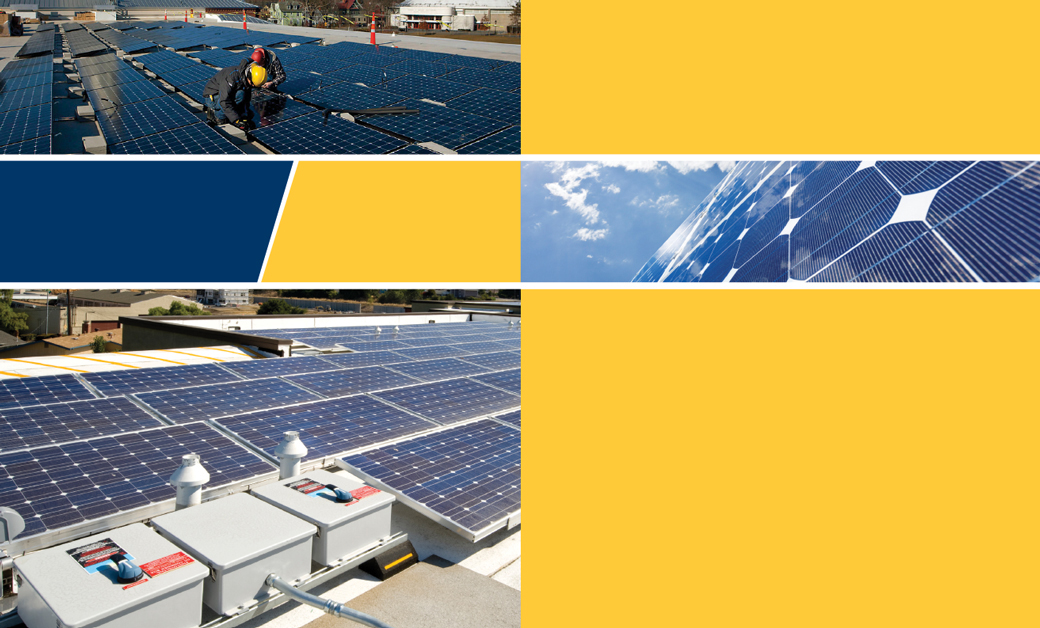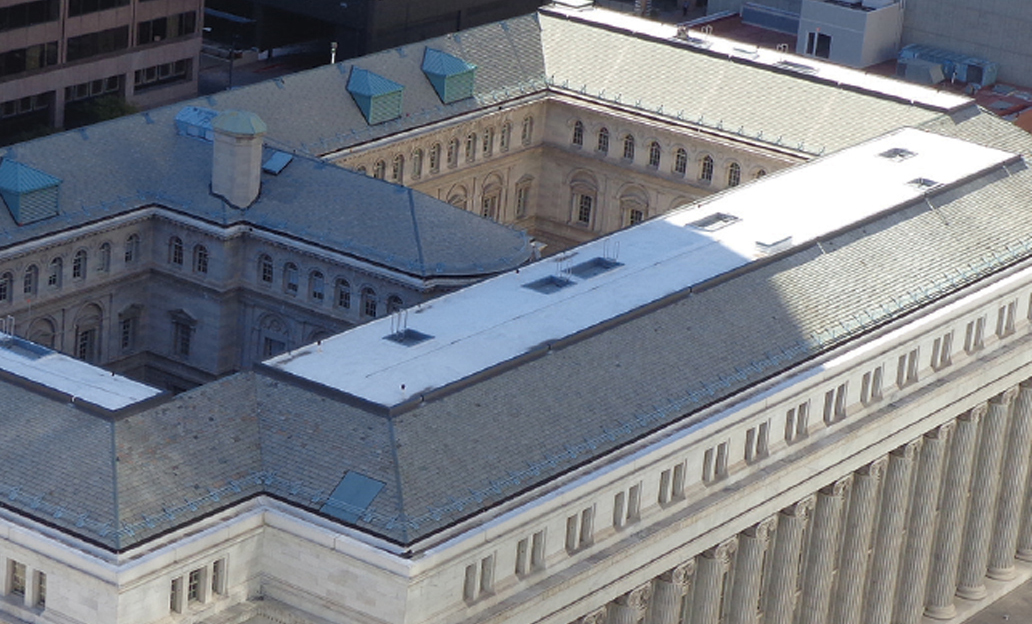By the time you've finished reading this article, more than one photovoltaic (PV) roof system will have been installed in the U.S. By the end of this year, we'll see a new PV roof system installed every 2.4 minutes, according to U.S. Solar Market Insight Report, Q2 2014. That's one more roof generating clean energy every two minutes.
Research conducted by GTM Research, a division of Greentech Media Inc., Boston, and the Solar Energy Industries Association® (SEIA) shows during the first half of 2014, 53 percent of new electric-generating capacity in the U.S. came from solar energy, much of it attributable to residential installations. Tens of thousands of U.S. households are generating their own electricity, and more than 143,000 U.S. workers are employed in solar manufacturing and services.
The Solar Market Insight Report forecasts 6.5 gigawatts (GW) of PV modules will be installed in the U.S. during 2014, a 36 percent increase from 2013 and more than triple the market size of just three years ago, with the fastest growth coming from the residential segment. With a total of 14.8 GW, there is enough installed solar capacity in the U.S. to power 3.2 million homes. This is enough pollution-free electricity to displace 19.4 billion pounds of coal or 2 billion gallons of gasoline, the equivalent of removing 3.8 million passenger cars from U.S. roads and highways.
The benefits of solar energy are evident—job creation and environmental sustainability. However, to realize these benefits, the solar industry must continue to collaborate and be proactive.
Creating jobs
The expanding solar jobs opportunity particularly is relevant for the roofing industry given the skill set overlap between roofing workers and solar system installers. According to The Solar Foundation's National Solar Jobs Census 2013 (Census 2013), U.S. solar installation companies employ more than 69,000 workers, making installation the largest U.S. solar industry segment. Installation jobs are expected to grow nearly 15,000 during 2014, and the jobs pay well. Census 2013 indicates solar installers earn an average of $23.63 per hour.
The installation workforce also is diverse, employing a comparatively large percentage of Hispanic workers. Veterans also are well-represented in this segment, with more than 13,000 veterans working at solar establishments across the U.S. But there is work to be done to grow the ranks of women in the solar industry. SEIA's membership in the organization Women in Solar is an important step in this direction.
Solar employers across the board are optimistic about the future. More than 44.5 percent of solar firms expect to add new workers in 2014, adding more than 22,200 new jobs with an annual growth rate of 15.6 percent. Although a majority of these new jobs will be added in the installation sector, every segment of the U.S. solar industry is expected to grow from 2013 to 2014. Census 2013 forecasts employment in the solar manufacturing segment, which has struggled during recent years, will increase 8.6 percent this year.
However, Census 2013 also recognizes there is a shortage of skilled solar workers and, therefore, a need for increased investments in employee training programs. To address this issue, Census 2013 recommends workforce training providers integrate solar curricula into building trades programs with a focus on skills transferability.
For example, as Census 2013 recognizes, a roofing worker trained in solar installation has options during downturns in the housing market. Private companies also are doing their part with new in-house training programs and professional instruction programs.
Improving safety
In addition to growing economic opportunities, the solar industry also faces growing responsibilities, particularly with respect to environment, health and safety issues. Similar to the roofing industry, safety is one of the solar industry's top priorities, and SEIA is advancing safety on several fronts, beginning with firefighter safety.
Given the rapidly evolving nature of the solar industry, firefighter safety is being addressed by several organizations whose work includes guidelines to safely address a fire involving solar products.
Additionally, many building codes now include provisions intended to address firefighter safety, such as minimum setback areas to provide space on the roof for walking around solar products. Product standards, which address safety in general, also cover fire safety and include provisions to address the needs of firefighters. But more work is needed in this area.
The solar industry is working closely with the fire service, roofing industry, building code officials and product safety community to develop a Solar & Fire Safety Dialogue. The dialogue will serve as a collaborative forum for advancing solar-related fire safety initiatives, including firefighter safety and training, building codes, product safety standards and fire safety research.
With respect to installer safety, SEIA is working with NRCA, Roof Integrated Solar Energy™ Inc. (RISE™), North American Board of Certified Energy Practitioners and the Interstate Renewable Energy Council to promote installer fall protection, installation best practices and professionalism.
During the past three years, the solar industry also has established a leading role in the development of solar building codes and product safety standards. SEIA is a principal voice on all solar-related discussions before the International Code Council® (ICC) and National Fire Protection Association in addition to other codes and standards bodies.
The solar industry is relying on a consensus-based approach by working with NRCA, RISE, the fire service community and other stakeholders. During the most recent ICC cycle, the solar industry worked directly with RISE and the California Department of Forestry and Fire Protection to support common-sense, fire-related updates to the International Fire Code® and International Residential Code.®
Given many solar products involve the flow of electricity, the safety of a solar product itself is another important consideration. Product safety standards developed by a variety of industry stakeholders seek to address these concerns. The solar and roofing industries closely have been involved in the development of UL 1703, "Flat-Plate Photovoltaic Modules and Panels," the key safety standard for PV modules, which includes fire test protocols the roofing industry has relied upon for decades. It particularly will be important for the solar and roofing industries to maintain an open dialogue regarding product safety because of the direct interaction between solar equipment and roofing materials. The two industries may not always agree, but given the multitude of common interests, collaboration is essential.
Building sustainability
Sustainability is another key issue for the solar industry. SEIA is committed to continuous progress of environmental and social responsibility within the solar industry. Sole reliance on solar energy's renewable aspects is not enough; proactive leadership is required to ensure solar remains a truly sustainable form of energy. In recognition of this, SEIA created the Solar Industry Commitment to Environmental and Social Responsibility, the industry's primary sustainability initiative.
Introduced in 2012, the commitment defines common practices and expectations for all solar industry participants, including manufacturers, suppliers, subcontractors and customers across the solar value chain. Effectively serving as an industry code of conduct, the commitment outlines standard practices in corporate social responsibility.
The Solar Industry Commitment to Environmental and Social Responsibility consists of two sets of principles—Solar Specific and Core Compliance, with some overlap between the two. Solar Specific principles articulate items of particular interest to the solar industry and/or its stakeholders, including human rights, electrical safety, energy and the environment, fall protection and reporting misconduct.
In contrast, Core Compliance principles provide a broad set of foundational expectations for sustainability, including labor, health and safety, environment, management systems and ethics. To reduce duplication, promote harmonization and advance shared approaches, the Core Compliance principles were adopted from the open-source Electronic Industry Citizenship Coalition's Code of Conduct.
Upholding the commitment not only promotes industry sustainability, it provides direct company benefits. First, the commitment enhances signatories' credibility and trust with investors, customers and regulators, all of which are increasingly looking for broad, objective measures of sustainability. Companies that participate gain more confidence to protect their companies' brands during difficult times.
Second, it furthers efficiency and innovation. Participation helps provide a road map for planning and resource allocation that will steer a company toward enhanced resource utilization, shared values and governance. Fundamentally, this is a management tool aimed to build capacity for a company and its suppliers to more strategically and cost-effectively approach and execute sustainability.
Third, joining the solar commitment exercises industry influence. Participation allows a company to be part of essential discussions shaping the future of solar sustainability. This may hold keys to fruitful collaboration and learning from peers and industry networks, and it increases the chances of establishing powerful cross-sector alliances.
Sustainability also requires industry leadership regarding recycling, including the development of solar recycling policies and procedures. Although most of the solar modules installed in the U.S. during the past 10 years will not begin to reach the ends of their useful service lives for another 10 to 15 years, the industry needs to plan for the future now.
During the past year, the solar industry held a series of internal and external meetings, facilitated discussions at key industry events, and conducted research to address solar recycling to identify key issues and opportunities related to solar recycling. The research included a review of existing solar recycling initiatives (Europe, for example, and how its recycling programs might apply to the U.S.); identifying lessons learned from other industries (consumer electronics recycling initiatives); and determining SEIA's role in the development of any state and/or federal PV recycling initiatives. With the benefit of this research, the industry now must determine how best to move forward with solar recycling.
A unique path forward
The benefits of solar energy are evident, but the solar, roofing and other affected industries must continue to collaborate and be proactive. Creating jobs, improving safety and building environmental sustainability all require proactive leadership to be fully realized. By working together, we all can find the lessons learned from other industries and create a unique path forward.
John Smirnow is SEIA's vice president of trade and competitiveness.



